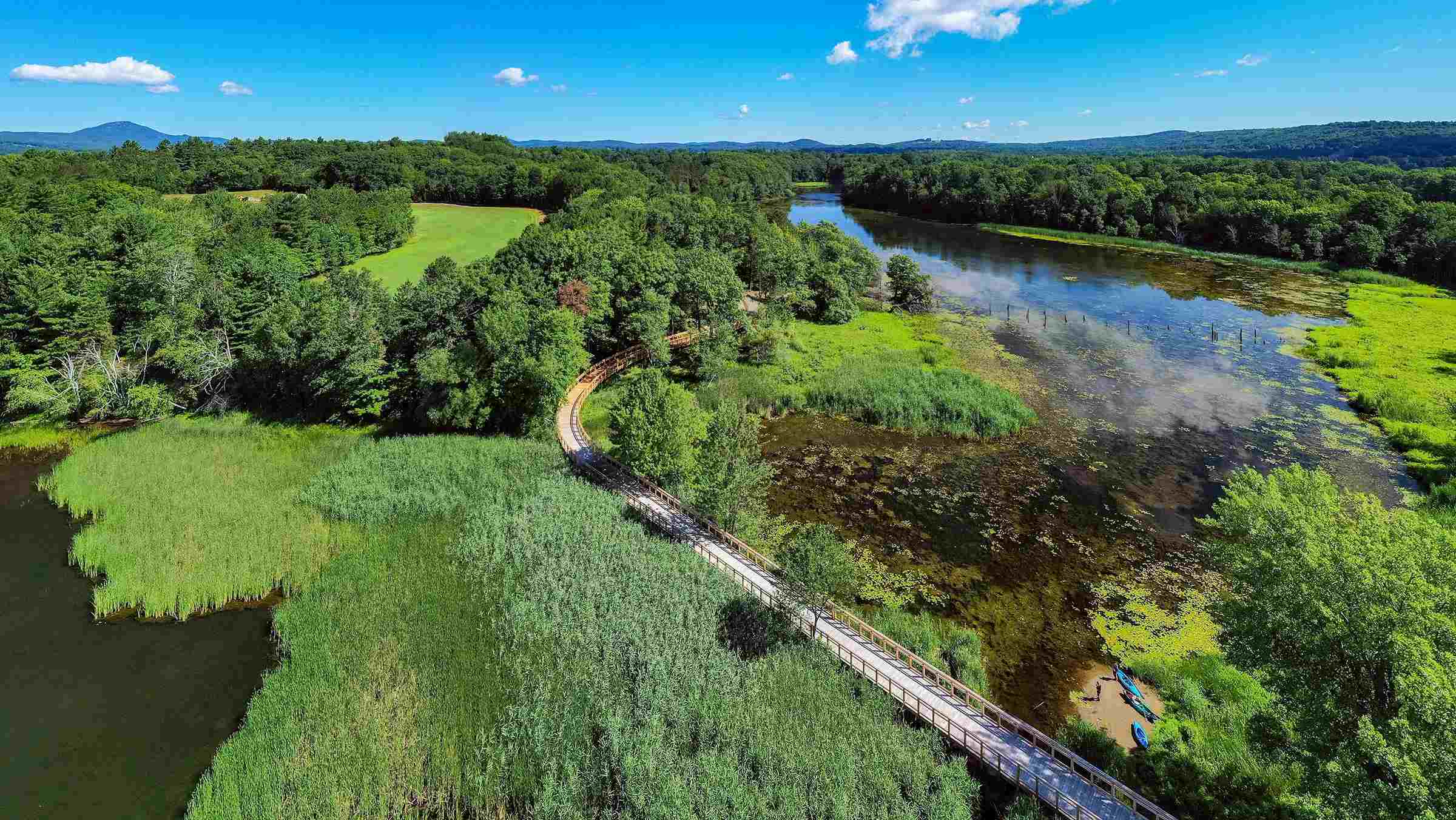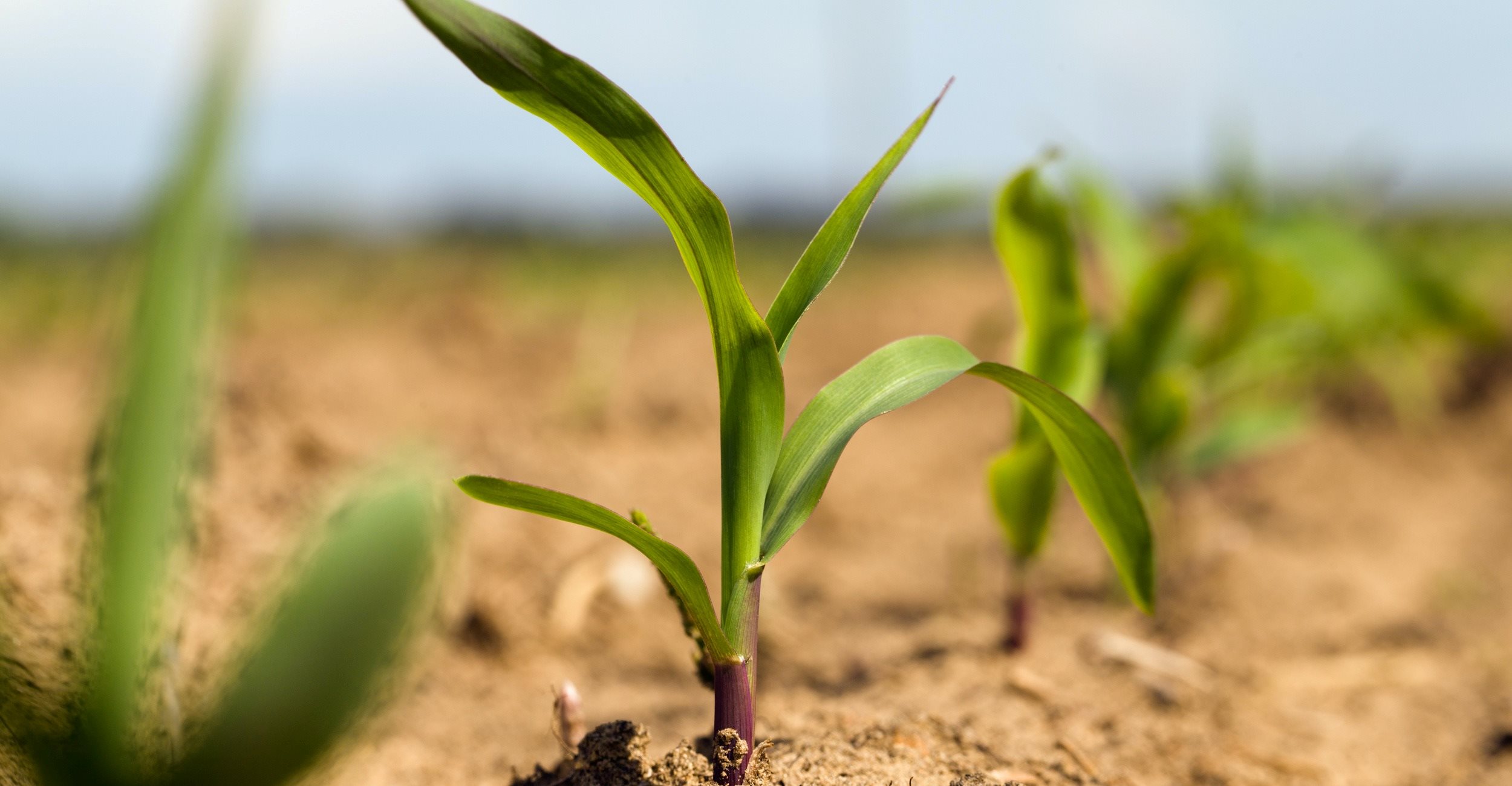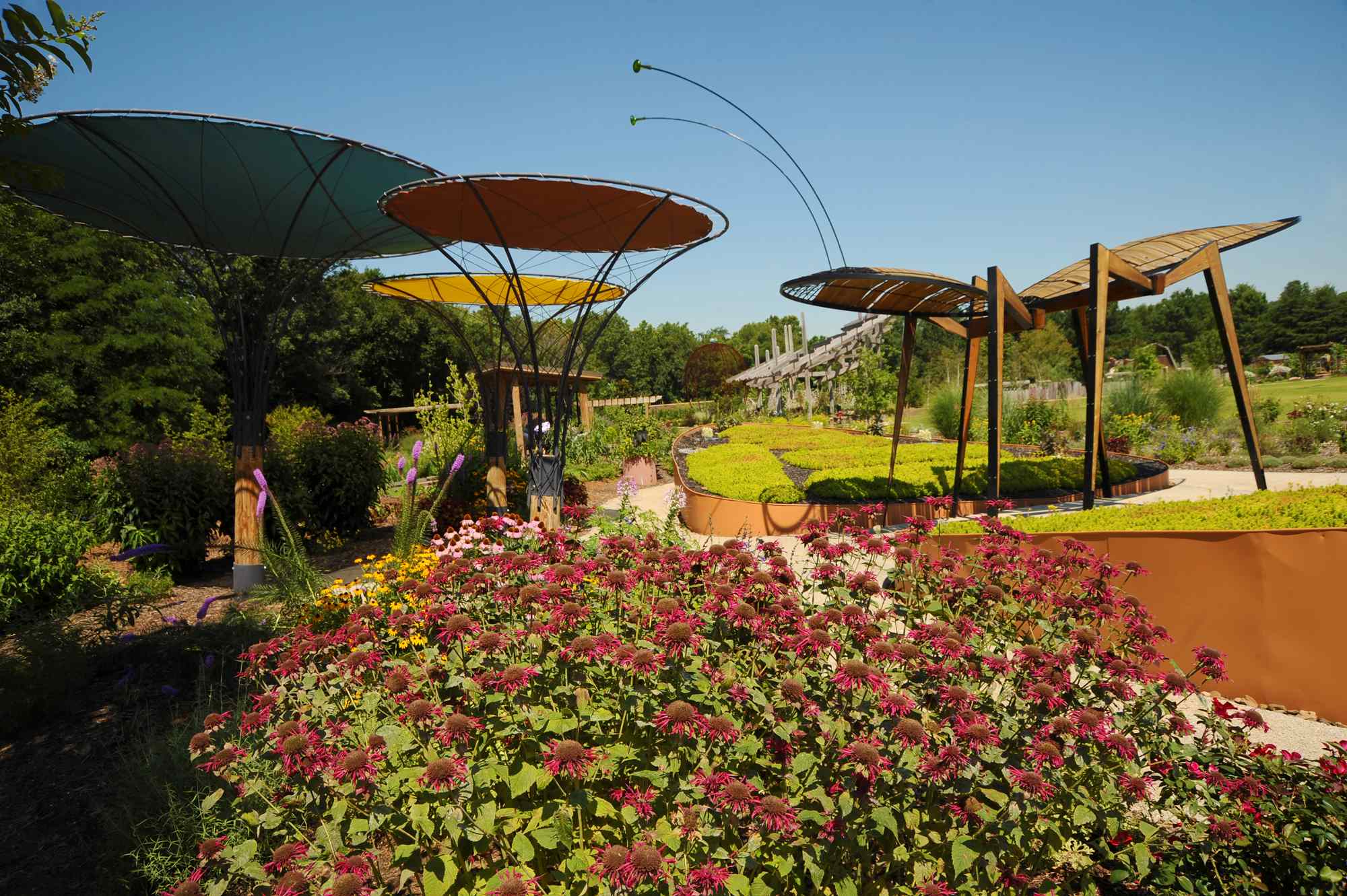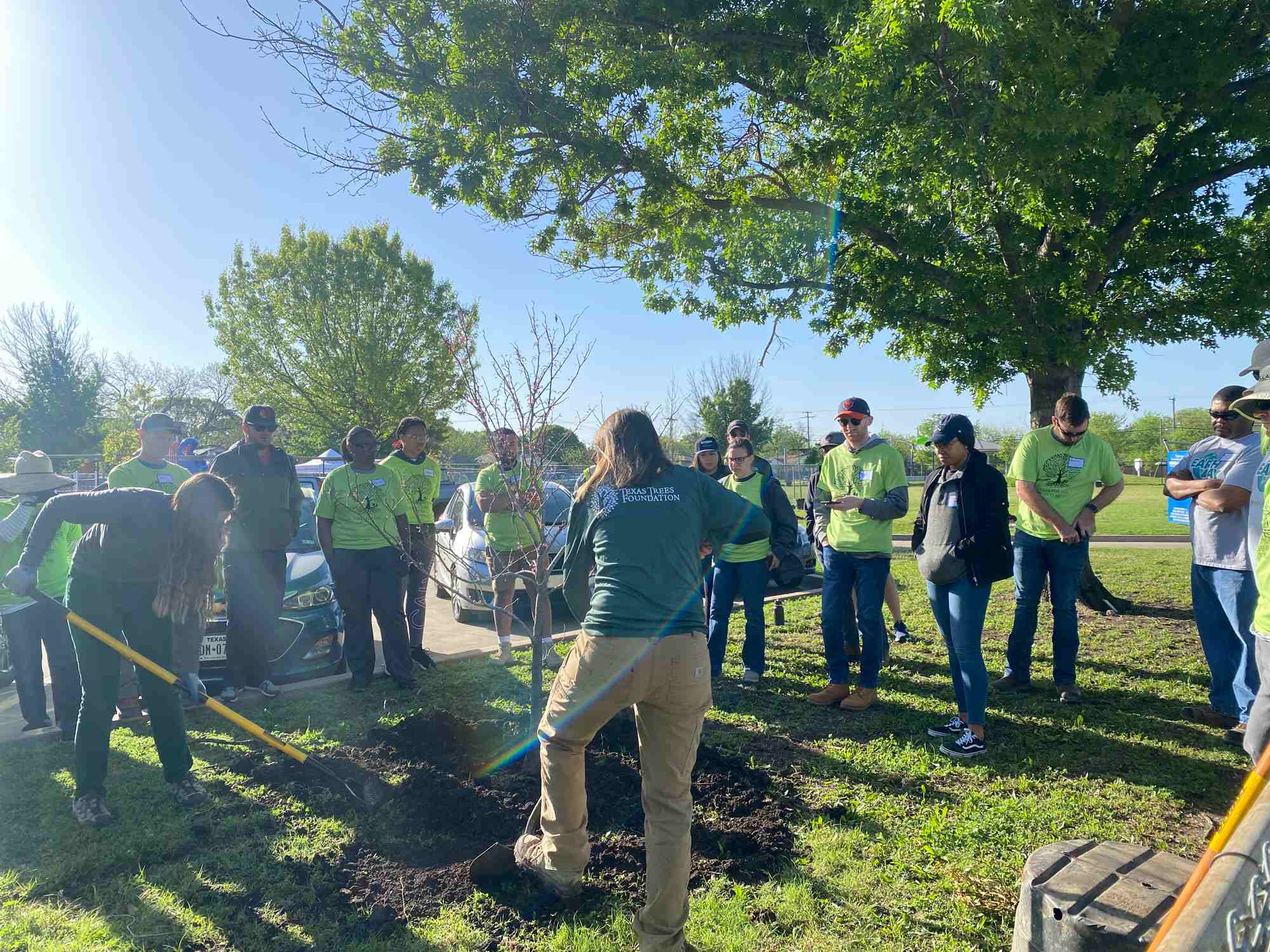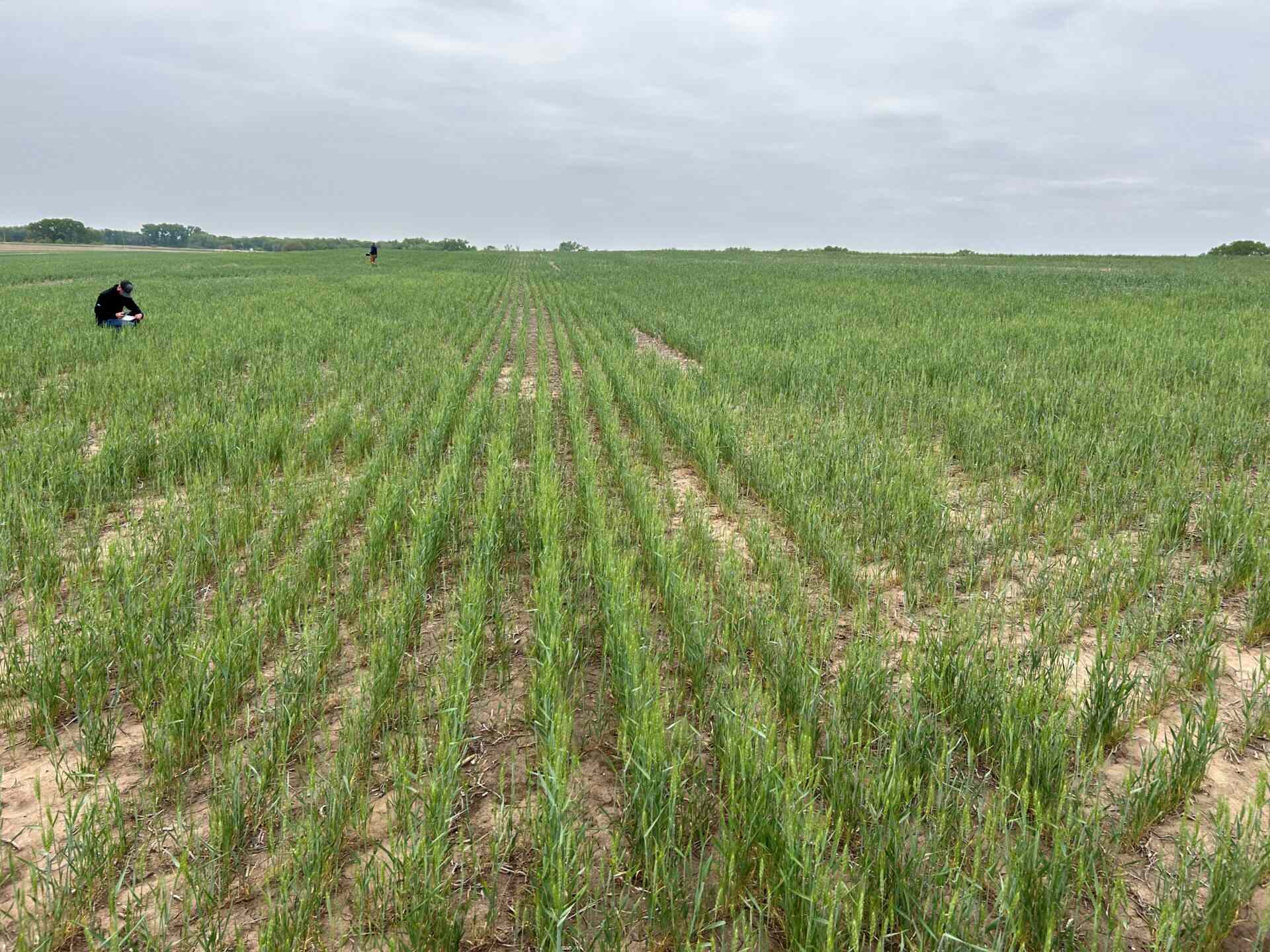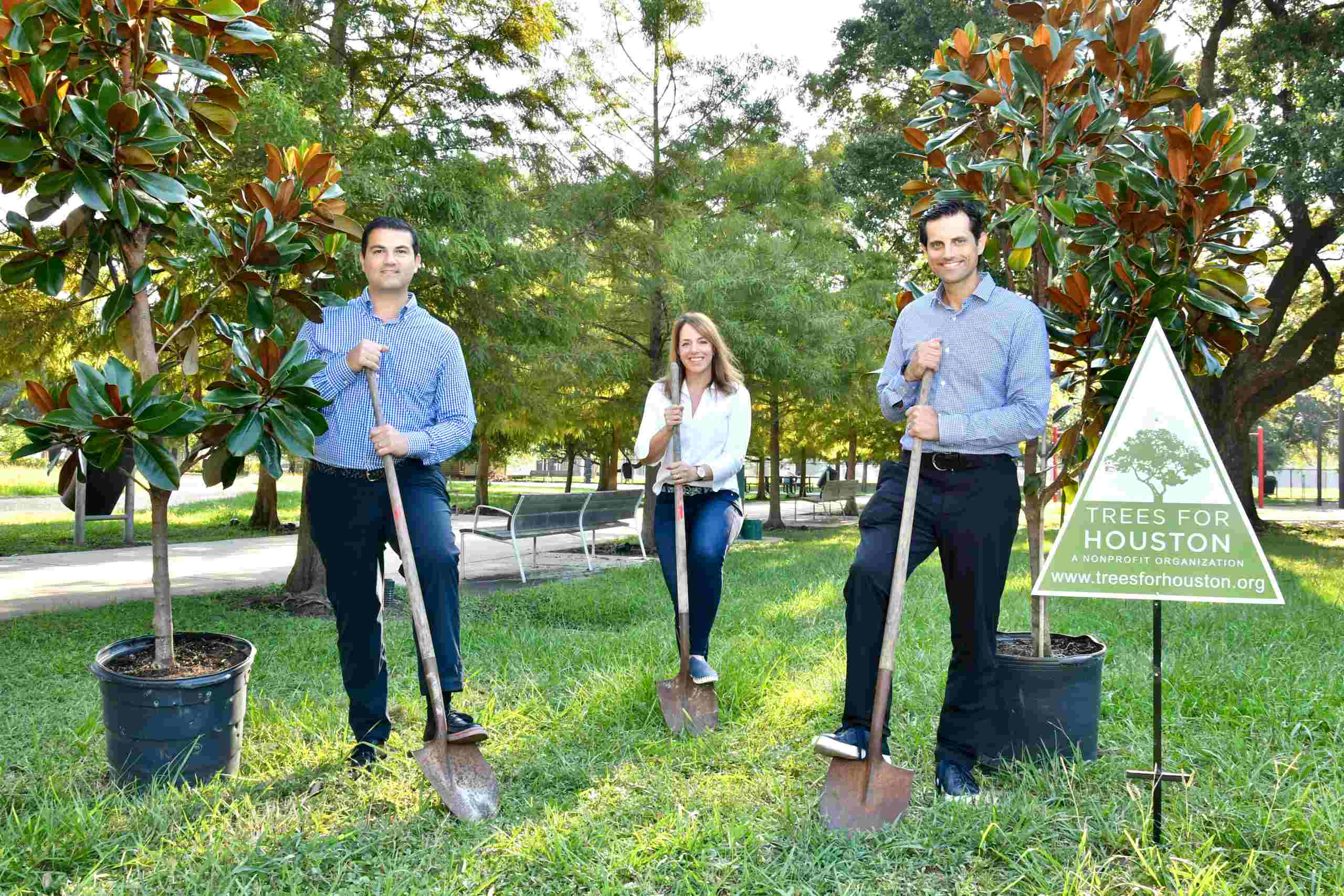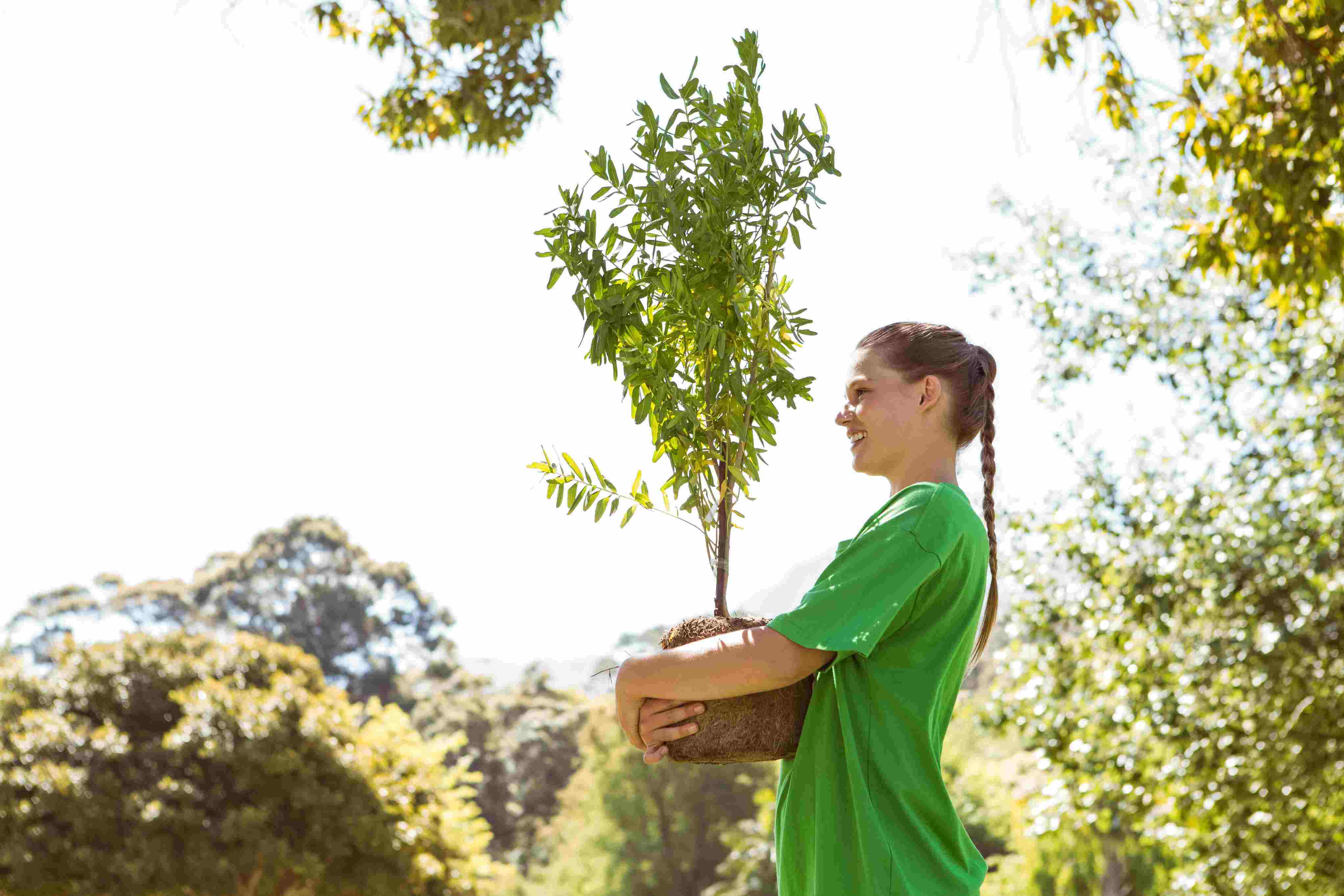Home>Gardening Basics>Understanding Soil>What Is Healdsburg Planting Zone
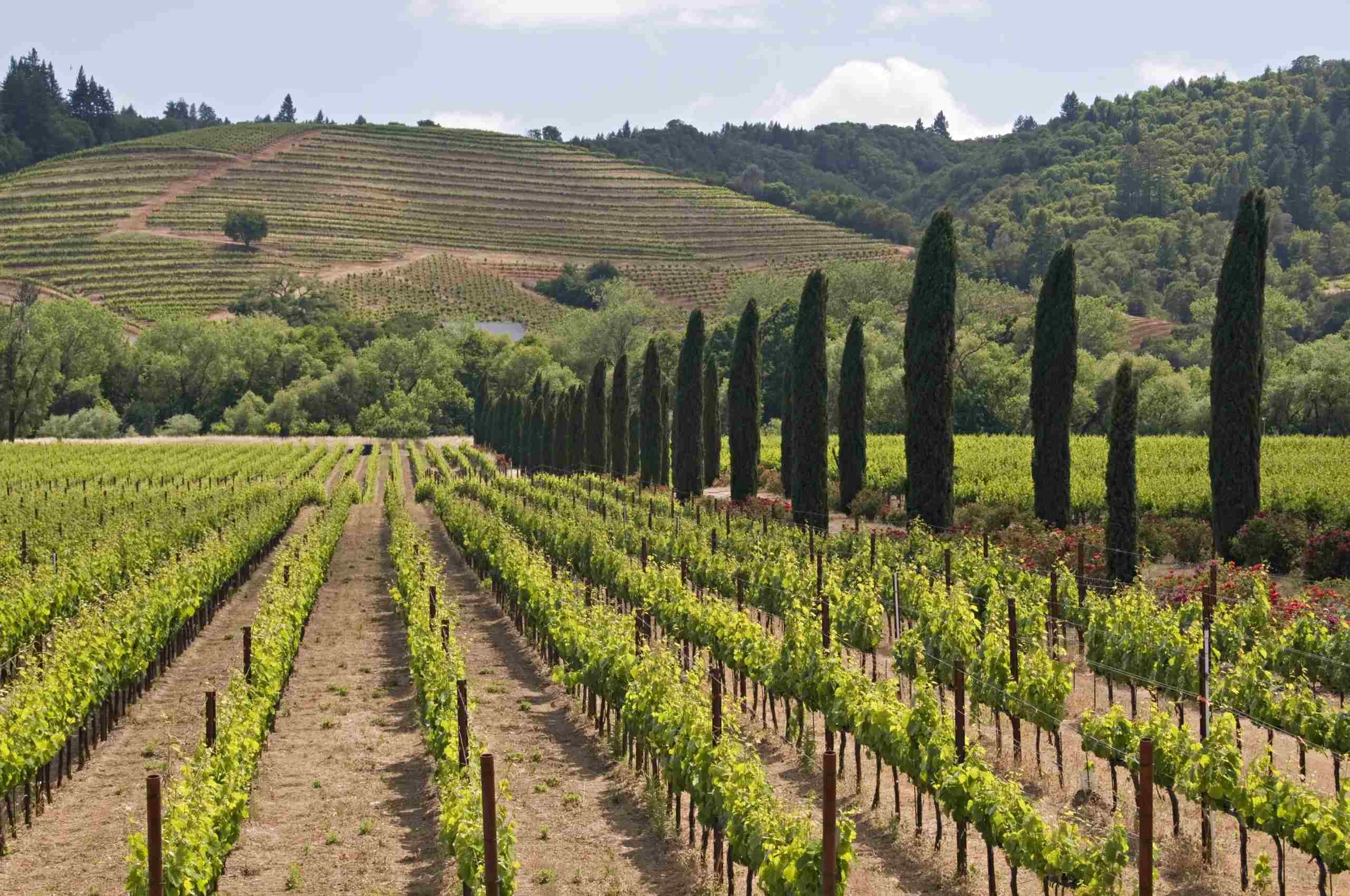

Understanding Soil
What Is Healdsburg Planting Zone
Modified: January 22, 2024
Learn about the Healdsburg planting zone and how understanding soil can help you successfully grow a variety of plants in this region.
(Many of the links in this article redirect to a specific reviewed product. Your purchase of these products through affiliate links helps to generate commission for Chicagolandgardening.com, at no extra cost. Learn more)
Table of Contents
Introduction
Welcome to the world of gardening and the fascinating concept of planting zones! If you’re an avid gardener or someone interested in starting a garden, understanding planting zones is essential. It allows you to optimize your gardening efforts by selecting the right plants that can thrive in your specific climate and soil conditions. In this article, we will explore the concept of planting zones and how they apply to the beautiful city of Healdsburg.
A planting zone, also known as a hardiness zone, is a geographic area defined by specific climatic conditions. It helps gardeners determine the best time to plant various types of plants and crops and ensures they have the greatest chance of success. Planting zones take into account factors like temperature ranges, average precipitation, and frost dates to create a classification system that guides gardeners in choosing appropriate plants.
Understanding planting zones is crucial because different plants have different temperature and weather requirements. Some plants thrive in cooler environments, while others need the warmth and sun. By knowing your planting zone, you can select plants that are well-suited to your region and avoid unnecessary trial and error.
Now, let’s delve into the specific planting zone of Healdsburg. Located in California’s beautiful Sonoma County, Healdsburg enjoys a Mediterranean climate with mild, wet winters and warm, dry summers. Its favorable climate makes it an ideal location for gardening and cultivating a wide variety of plants.
Healdsburg’s planting zone is predominantly classified as USDA hardiness zone 9b. This means that the average annual minimum temperature in Healdsburg ranges from 25 to 30 degrees Fahrenheit (-4 to -1 degrees Celsius). However, microclimates within the city can vary slightly, offering even more gardening possibilities.
With a better understanding of Healdsburg’s planting zone, you can confidently embark on your gardening journey. In the following sections, we will explore the climate and weather patterns in Healdsburg, how to determine the specific planting zone for your property, common plants and crops that thrive in the area, and valuable tips for gardening success.
Definition of a Planting Zone
Before we dive into the specifics of Healdsburg’s planting zone, let’s first understand what a planting zone is. A planting zone, also known as a hardiness zone, is a geographical area that is classified based on its specific climatic conditions. It serves as a guide for gardeners to determine which plants are best suited for their region.
The concept of planting zones was first developed by the United States Department of Agriculture (USDA) to create a standardized system for gardeners across the country. The USDA Hardiness Zone Map divides the United States into 13 zones, ranging from Zone 1, which experiences the coldest temperatures, to Zone 13, which experiences the warmest temperatures. These zones are further divided into subzones, denoted by letters, to provide more precise information about temperature variations within a zone.
Planting zones are determined using a variety of factors, with the average annual minimum temperature being one of the most important. Other climatic variables, such as frost dates, heat tolerance, and rainfall patterns, also play a role in defining a zone. By analyzing these factors, experts are able to create a map that classifies different regions based on their climate and weather conditions.
Each planting zone has a recommended range of plants and crops that are most likely to thrive in its specific climate. For example, plants that are adapted to cold temperatures and frost will be suitable for planting in Zone 1, while plants that require warm temperatures and longer growing seasons are more appropriate for planting in Zone 10 or higher.
It’s important to note that planting zones are not fixed and can change over time due to variations in climate and weather patterns. As our planet undergoes climate change, some areas may experience shifts in temperature ranges, altering their planting zones. Therefore, it’s advisable for gardeners to stay up-to-date with the latest zone information to ensure the best chances of success in their gardening endeavors.
Now that we have a clear understanding of what a planting zone is, let’s explore in detail Healdsburg’s specific planting zone and how it shapes gardening in this beautiful city.
Importance of Planting Zones
Planting zones play a crucial role in gardening and are of significant importance for both experienced gardeners and beginners alike. Here are some key reasons why understanding planting zones is essential:
- Optimum plant selection: Planting zones provide valuable information about the climatic conditions in a specific area. By knowing your planting zone, you can select plants and crops that are well-suited to your region’s temperature ranges and weather patterns. This ensures that your plants have the best chance of thriving and producing a bountiful harvest.
- Minimize plant stress: Different plants have different temperature and weather requirements. By choosing plants that are adapted to your planting zone, you can minimize stress on your plants. This helps them grow stronger, healthier, and more resilient, making them less susceptible to diseases, pests, and other environmental pressures.
- Time and resource management: Gardening can be time-consuming and resource-intensive. Understanding your planting zone allows you to optimize your gardening efforts by focusing on plants that are well-suited to your specific climate. This helps you save time, money, and resources by avoiding the trial and error of planting unsuitable species.
- Extend growing seasons: Planting zones can also guide you in extending the growing season. By selecting plants that can tolerate cooler temperatures or by using protective measures like row covers and greenhouses, you can start planting earlier in the spring and continue harvesting well into the fall. This maximizes your gardening potential and allows you to enjoy fresh produce for a longer period.
- Environmental awareness: By considering your planting zone, you can make environmentally conscious choices. Planting species that are well-adapted to your area reduces the need for excessive watering, fertilization, and chemical treatments. It promotes biodiversity and supports the natural ecosystem, as well as conserving water and reducing the overall carbon footprint associated with gardening activities.
Whether you’re a seasoned gardener or just starting in the world of gardening, understanding planting zones is crucial for successful and sustainable gardening practices. Now, let’s move on to the next section where we will explore the geographic location of Healdsburg and its impact on its planting zone.
Geographic Location of Healdsburg
Healdsburg, a picturesque city located in Sonoma County, California, enjoys a favorable geographic location that contributes to its unique planting zone. Situated in the heart of wine country, Healdsburg is nestled at the confluence of the Russian River and Dry Creek Valley, surrounded by rolling hills and vineyards.
The city is positioned in the northern part of California’s renowned wine region, approximately 70 miles north of San Francisco. Its proximity to the Pacific Ocean and the coastal influences contribute to its Mediterranean climate. The geography of Healdsburg, along with its close proximity to the ocean, plays a significant role in shaping its planting zone.
One notable aspect of Healdsburg’s geographic location is its elevation variation. While the city center sits at an elevation of around 130 feet, the terrain quickly rises as you move away from the valley. The higher elevations provide cooler temperatures and different microclimates within the same planting zone. This offers gardening enthusiasts the opportunity to experiment with a wider range of plant varieties.
The presence of the Russian River and Dry Creek in Healdsburg also contributes to its unique climate. The water bodies act as natural air conditioning, cooling the surrounding areas and reducing temperature extremes. They also provide a valuable water source for irrigation, supporting agriculture and gardening activities in the region.
Healdsburg’s geographic location within the Mediterranean climate zone further enhances its gardening potential. The region experiences mild, wet winters and warm, dry summers, creating an ideal environment for a diverse range of plants. The ample sunshine, along with the occasional coastal fog, helps provide the necessary warmth and light for plants to thrive.
With its scenic beauty, mild climate, and diverse geography, Healdsburg offers an exceptional setting for gardening. From the fertile valleys to the rolling hillsides, there are gardening opportunities for everyone to explore and enjoy.
Now that we have explored the geographic location of Healdsburg, the next section will delve into the climate and weather patterns that define Healdsburg’s unique planting zone.
Climate and Weather Patterns in Healdsburg
Healdsburg, located in California’s picturesque Sonoma County, is known for its pleasant Mediterranean climate. The region experiences distinct seasons and a combination of weather patterns that contribute to its unique gardening conditions. Understanding the climate and weather patterns in Healdsburg is essential for successful gardening in this vibrant city.
Healdsburg’s climate is characterized by mild, wet winters and warm, dry summers. The average annual rainfall in the area is around 40 inches, with the majority of the precipitation occurring between November and April. This abundance of winter rain helps nourish the soil and replenish water sources, setting the stage for healthy plant growth.
During the winter months, temperatures in Healdsburg typically range from the mid-40s to low 60s Fahrenheit (7-17 degrees Celsius). While frost can occur in some parts of the region, it is not as severe or prolonged as in colder planting zones. This allows for an extended growing season and the cultivation of plants that may not thrive in harsher climates.
As spring approaches, Healdsburg experiences a gradual warming trend with temperatures ranging from the 60s to low 70s Fahrenheit (15-23 degrees Celsius). The longer daylight hours and milder temperatures create optimal conditions for planting and seedling growth. The risk of frost diminishes, providing gardeners with the opportunity to begin planting tender crops earlier in the season.
Summer in Healdsburg brings warm and dry weather, with temperatures ranging from the upper 70s to low 90s Fahrenheit (25-32 degrees Celsius). The hot, sunny days are beneficial for sun-loving plants and fruiting crops such as tomatoes, peppers, and melons. However, it is important to provide adequate irrigation and monitor soil moisture levels, as the dry conditions can lead to water stress for plants.
Autumn in Healdsburg is characterized by milder temperatures and the occasional onset of rainfall. The transition from the hot summer months to the cooler fall weather allows for the planting of cool-season crops like lettuce, spinach, and broccoli. The cooler temperatures also provide relief for plants that may have struggled with the summer heat, allowing them to recover and continue growing.
It’s important to note that while Healdsburg enjoys an overall Mediterranean climate, microclimates can exist within the city due to variations in elevation and proximity to bodies of water. These microclimates can create subtle differences in temperature, humidity, and frost occurrences. As a gardener, it’s essential to observe and understand the specific microclimate of your garden to make informed planting decisions.
By staying attuned to the climate and weather patterns in Healdsburg, you can successfully plan and adapt your gardening practices to maximize productivity and plant health. In the next section, we will explore how to determine Healdsburg’s specific planting zone in order to further optimize your gardening endeavors.
Determining Healdsburg’s Planting Zone
Now that we have a clear understanding of Healdsburg’s climate and weather patterns, let’s explore how to determine the specific planting zone for this beautiful city. Knowing your planting zone is crucial for selecting plants that are well-suited to your region’s unique conditions.
One of the most reliable resources for determining planting zones is the USDA Hardiness Zone Map. This map divides the United States into 13 zones based on average annual minimum temperatures. To determine Healdsburg’s planting zone, you can refer to this map or use online resources that provide interactive zone finders.
For Healdsburg, the USDA hardiness zone is predominately classified as 9b. This means that the average annual minimum temperature in Healdsburg ranges from 25 to 30 degrees Fahrenheit (-4 to -1 degrees Celsius). However, it’s important to note that microclimates within the city can have slightly different temperature ranges, creating opportunities for gardening a variety of plants.
It’s also worth considering other factors that can influence plant growth in Healdsburg. For instance, the city’s proximity to bodies of water, such as the Russian River, can moderate temperatures and create a more favorable environment for certain plants. Elevation variations within the region also contribute to microclimates, allowing gardeners to experiment with a wider range of plant species.
Observing the plants that thrive in your neighborhood or consulting with local gardening experts and nurseries are additional ways to gain insight into Healdsburg’s specific planting conditions. They can offer valuable knowledge and guidance based on their experiences and observations of successful plantings in the area.
Once you have determined Healdsburg’s specific planting zone, you can make informed decisions about the types of plants and crops to grow. Selecting plants that are well-suited to your zone’s temperature range, frost dates, and average rainfall will increase the chances of gardening success.
Remember that while planting zones provide guidance, they are not rigid rules. Factors such as microclimates, soil composition, and sun exposure within your own garden can also influence plant growth. Monitoring your plants closely, noting their responses to the local conditions, and making adjustments as needed will further enhance your gardening experience.
With the planting zone determined, let’s dive into the next section where we will explore the common plants and crops that thrive in Healdsburg’s specific planting zone.
Common Plants and Crops in Healdsburg Planting Zone
Healdsburg’s favorable planting zone, classified as USDA hardiness zone 9b, offers a wide array of plants and crops that thrive in its unique climate. Here are some common plants and crops that gardeners in Healdsburg can enjoy growing:
- Vineyard Grapes: Healdsburg is renowned for its vineyards and wineries, making wine grapes a popular choice for local gardeners. Varieties such as Cabernet Sauvignon, Chardonnay, and Pinot Noir flourish in Healdsburg’s Mediterranean climate, producing flavorful and aromatic wines.
- Citrus Trees: Healdsburg’s warm summers and mild winters provide an ideal environment for growing citrus trees. Varieties like oranges, lemons, and grapefruits can thrive, offering a fresh and bountiful harvest of juicy fruits.
- Olives: Olive trees are well-suited to Healdsburg’s climate and can produce high-quality olives for pressing into oil or curing for consumption. Varieties like Arbequina, Frantoio, and Mission perform exceptionally well in the region’s Mediterranean conditions.
- Tomatoes: With its warm and sunny summers, Healdsburg is an excellent place for growing tomatoes. Popular heirloom varieties like Brandywine, Cherokee Purple, and San Marzano thrive in the region, offering delicious, juicy fruits for fresh consumption or preserving.
- Herbs: Many culinary herbs thrive in Healdsburg’s planting zone, allowing gardeners to add fresh flavors to their dishes. Herbs like rosemary, thyme, oregano, and basil grow vigorously, offering an abundance of fragrant leaves for seasoning and garnishing.
- Garden Greens: Healdsburg’s mild winters and cool spring and autumn temperatures provide excellent conditions for growing a variety of greens. Lettuces, spinach, kale, and Swiss chard can be cultivated for fresh salads and nutritious meals throughout the year.
- Flowering Plants: In addition to edible crops, Healdsburg’s planting zone supports an array of beautiful flowering plants. Roses, lavender, hydrangeas, and daisies thrive, adding color and fragrance to gardens and landscapes.
These are just a few examples of the many plants and crops that can be successfully grown in Healdsburg’s planting zone. By selecting varieties that are well-adapted to the region’s climate and making use of microclimate variations within your own landscape, you can further expand the range of plants you can grow.
Local nurseries and gardening communities are valuable resources for obtaining specific recommendations and advice on the best plant varieties for Healdsburg’s unique conditions. They can provide insight into particular cultivars that have proven successful in the area and offer guidance on cultivation techniques.
Now that we’ve explored some common plants and crops in Healdsburg’s planting zone, let’s move on to the next section where we will provide helpful tips for gardening success in this vibrant city.
Tips for Gardening in Healdsburg Planting Zone
Gardening in Healdsburg’s planting zone of USDA hardiness zone 9b can be a rewarding and enjoyable experience. Here are some helpful tips to ensure success in your gardening endeavors:
- Watering: While Healdsburg experiences ample rainfall in the winter, it’s important to provide supplemental irrigation during the dry summer months. Deep and infrequent watering helps establish strong root systems. Consider using drip irrigation or soaker hoses to deliver water directly to the plants’ roots and minimize evaporation.
- Soil Preparation: Prepare your garden beds by enriching the soil with organic matter such as compost or well-rotted manure. This improves soil fertility, drainage, and moisture retention, creating a healthy growing environment for your plants.
- Mulching: Apply a layer of organic mulch around your plants to conserve soil moisture, suppress weed growth, and regulate soil temperature. Mulch also adds nutrients to the soil as it breaks down over time.
- Timing: Healdsburg’s planting zone allows for an extended growing season. Start your plants early in spring to get a head start, and consider succession planting to maximize your harvest throughout the season. Additionally, staggered plantings of cool-season crops in late summer and early fall can give you a continuous supply of fresh greens.
- Microclimates: Pay attention to the microclimates within your garden or landscape. Certain areas may be warmer or cooler than others, providing an opportunity to grow a wider variety of plants. Utilize these microclimates to diversify your garden and experiment with different plant species.
- Protection from Frost: While Healdsburg experiences milder frosts, it’s still important to protect tender plants during cold snaps. Use frost blankets or covers to shield sensitive plants from frost damage. Consider planting frost-tolerant varieties or bringing potted plants indoors during extreme cold spells.
- Pruning and Training: Regular pruning and training of fruit trees and grapevines help maintain strong and productive plants. Follow proper pruning techniques and consult resources specific to each plant variety for guidance on shaping, thinning, and training.
- Pest and Disease Management: Be proactive in managing pests and diseases by practicing good plant hygiene, monitoring for signs of infestation or disease, and utilizing environmentally friendly pest control methods. Regularly inspect your plants, remove any affected parts, and consider companion planting and natural pest control methods to minimize the use of chemicals.
- Continuous Learning: Gardening is a continuous learning process. Stay curious, seek knowledge from local gardening communities, attend workshops, and keep up to date with resources specific to Healdsburg’s planting zone. Learning from fellow gardeners and sharing experiences can further enhance your gardening skills and success.
Remember, gardening is a dynamic and enjoyable activity that allows you to connect with nature and reap the rewards of your efforts. Embrace the unique characteristics of Healdsburg’s planting zone, get creative, and have fun experimenting with different plant varieties and gardening techniques.
With these tips in mind, you are well-equipped to embark on your gardening journey in Healdsburg’s vibrant planting zone.
Conclusion
Understanding the planting zone of Healdsburg is vital for successful gardening in this beautiful city. By familiarizing yourself with the unique climate and weather patterns, determining your specific planting zone, and selecting plants and crops that are well-suited to the region, you can optimize your gardening efforts and increase your chances of a successful harvest.
Healdsburg’s USDA hardiness zone of 9b, with its Mediterranean climate characterized by mild, wet winters and warm, dry summers, offers a wide range of possibilities for gardeners. From vineyard grapes and citrus trees to olive groves, tomatoes, and garden greens, there is no shortage of options for creating a thriving and bountiful garden.
By following helpful tips such as proper watering techniques, soil preparation, mulching, and paying attention to microclimates within your garden, you can further enhance your gardening success. Taking steps to protect plants from frost and pests, as well as staying open to continuous learning and exploring new gardening methods, will contribute to your growth as a gardener.
Remember, gardening is not only a means to grow plants and harvest crops; it is a fulfilling and therapeutic activity that allows you to connect with nature and create a vibrant outdoor space. Take the opportunity to immerse yourself in the joy and fulfillment that gardening in Healdsburg’s unique planting zone can bring.
So, get your hands in the soil, embrace the beauty of Healdsburg’s climate, and let your garden flourish. Happy gardening!
